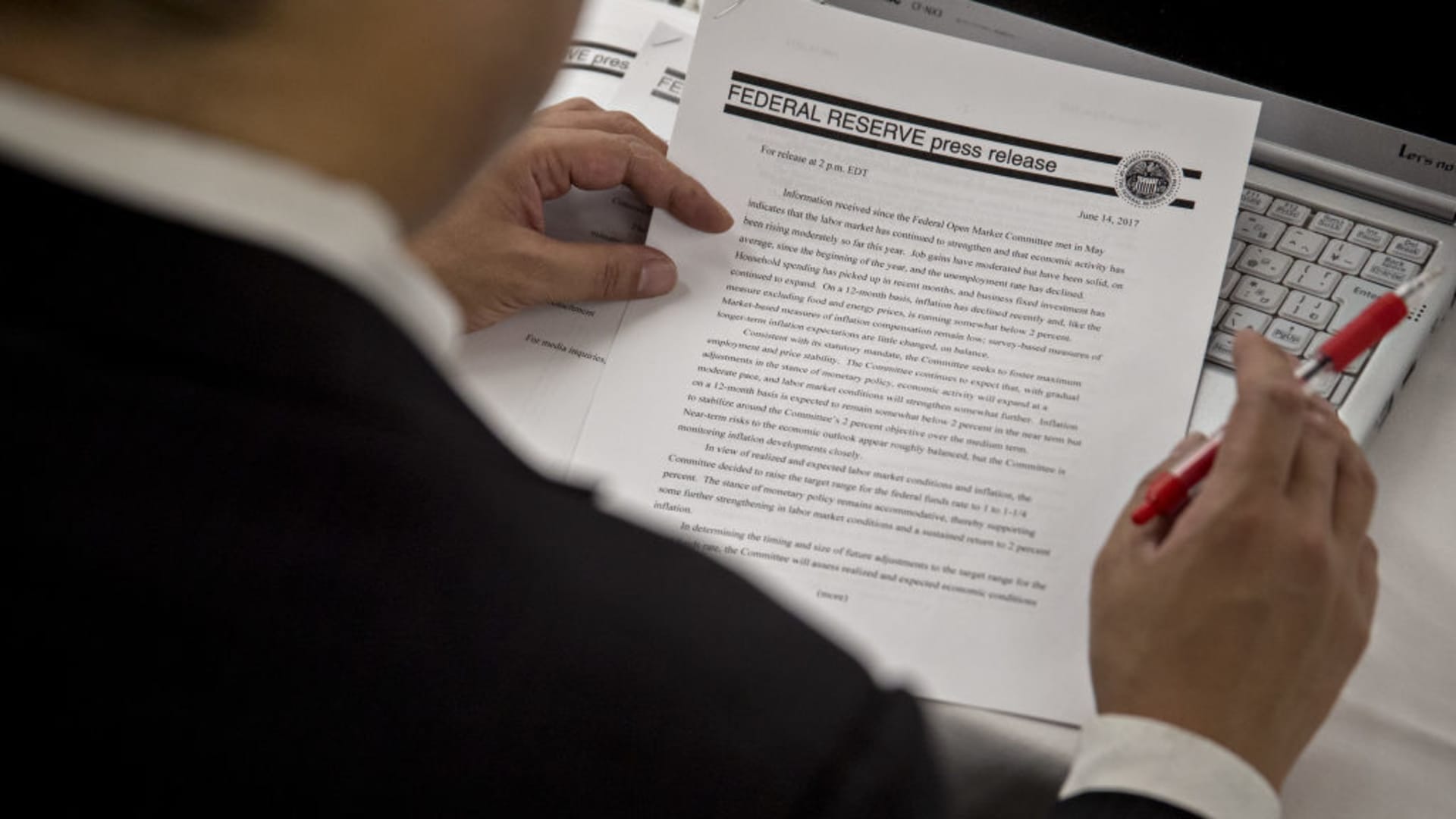Federal Reserve officials left interest rates unchanged at their June meeting on Wednesday and forecast they will cut borrowing costs just once before the end of 2024.
While the Fed was expected to leave interest rates unchanged, its forecasts for where interest rates might move surprised many economists.
When Fed officials last released quarterly economic estimates in March, they expected to cut interest rates three times this year. Investors had expected to revise that outlook somewhat this time given stubborn inflation in early 2024, but the shift to a single cut was more drastic.
Jerome H. Powell, the Fed chairman, made clear in a news conference after the meeting that officials were taking a cautious and conservative approach after months of spotty inflation data.
As price increases prove volatile and the labor market remains resilient, policymakers believe they have room to keep interest rates stable to ensure they fully contain inflation without posing too much risk to the economy. However, the Fed chairman also hinted that further interest rate cuts could be possible depending on the economic data.
“Fortunately, we have a strong economy and we have the ability to address this issue carefully — and we will approach it carefully,” Powell said. He added: “We are keeping an eye on downside risks to the economy should they arise.”
Fed officials quickly raised interest rates to 5.3 percent, the highest in more than two decades, between early 2022 and last July. They have left them there since, hoping that higher borrowing costs will curb demand from consumers and businesses enough to bring price increases back to a normal pace.
Initially, the plan worked wonderfully: Inflation slowed steadily in 2023, so much so that Fed officials expected a significant cut in interest rates at the start of 2024. But then price hikes proved surprisingly stubborn for a few months — and policymakers had to postpone their rate-cutting plans for fear of cutting borrowing costs too soon.
The risk of a premature cut is that “we could end up undoing a lot of the good that we’ve done,” Powell said Wednesday.
Now the inflation picture is changing again. New consumer price index data on Wednesday suggests that persistent inflation at the start of 2024 was more of a spike in speed than a reversal: Price increases cooled significantly and across the board in May.
Still, it will be late in the year before the Fed implements the three interest rate cuts it had only expected in March. And Mr. Powell made clear that officials wanted to see more encouraging inflation reports before sharply cutting borrowing costs.
“Readings like today’s are a step in the right direction,” he said. “But it’s just a reading. You don’t want to get too motivated by a single data point.”
If officials make just one rate cut before the end of the year, it would bring their base rate down to 5.1 percent. Policymakers gave no clear indication of when the rate cut might occur. They will meet four more times this year: in July, September, November and December.
For American families, the Fed’s more cautious approach could mean mortgage rates, credit card rates and auto loan rates stay higher for longer. But Mr. Powell stressed that inflation is also painful for households and that the Fed’s goal is to contain rapid price increases.
For President Biden, a prolonged period of high interest rates could mean the economy is less strong ahead of the November election. The White House avoids talking about Fed policy because the central bank sets interest rates independently, allowing officials to make tough decisions without bowing to short-term political pressure. However, some Democrats in Congress are vocal in calling for rate cuts, and sitting presidents generally prefer lower rates.
Mr. Biden at times came close to commenting on Fed policy but avoided putting direct pressure on the Fed.
On the other hand, whichever presidential candidate wins could benefit from a steeper rate-cutting path next year: Even as Fed officials predicted fewer rate cuts in 2024, they indicated they could cut rates four times in 2025, up from three previously.
The Fed’s forecasts also showed that officials expect inflation in 2024 to prove more stable than they had previously expected: Headline inflation could end the year at 2.6 percent, they forecast, up from 2.4 percent in their previous estimate. Mr. Powell suggested that the Fed’s inflation forecasts were “conservative.”
He also made it clear that the Fed’s forecasts are not a set plan. If inflation declines or the labor market unexpectedly weakens, the Fed could respond by cutting interest rates.
“We do not believe it will be appropriate to begin easing policy until we are more certain that inflation is falling,” Powell said, or unless there is an “unexpected deterioration” in the labor market.
The economy remains robust for now and the Fed only has one meeting this summer, in July. Then few investors expect a movement.
“I think this will push interest rates higher in the longer term,” said Blerina Uruci, chief U.S. economist at T. Rowe Price.
Source link
2024-06-12 20:53:39
www.nytimes.com















